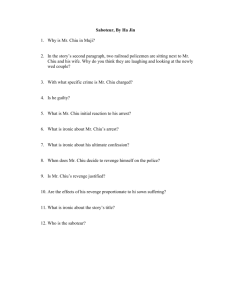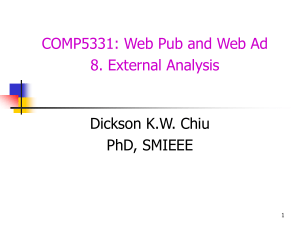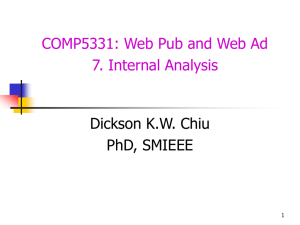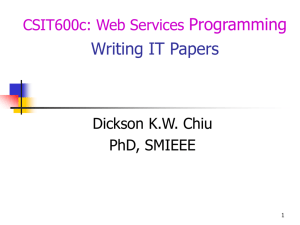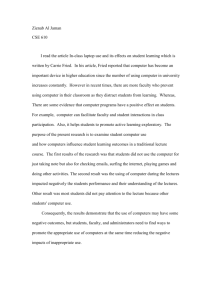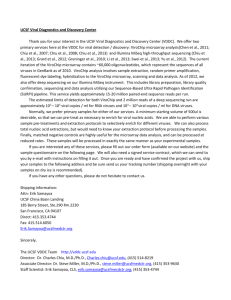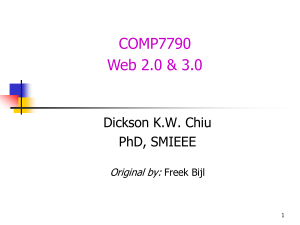ppt
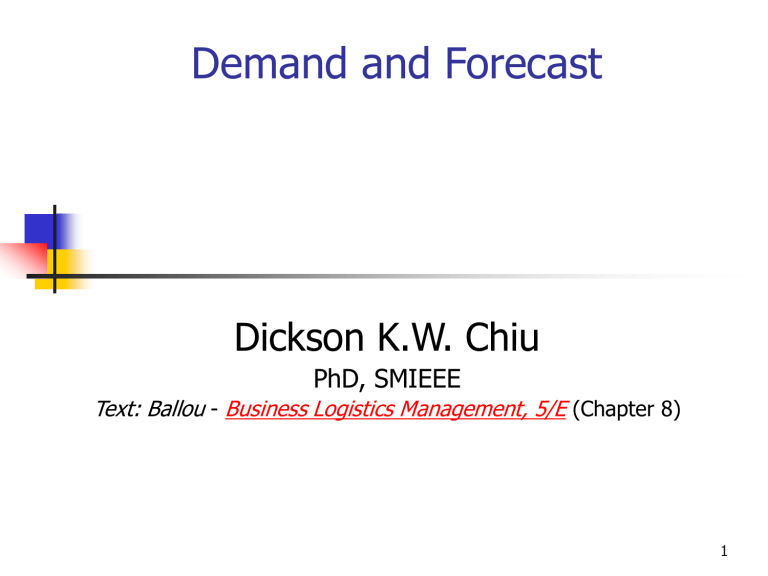
Demand and Forecast
Dickson K.W. Chiu
PhD, SMIEEE
Text: Ballou Business Logistics Management, 5/E (Chapter 8)
1
Learning Objectives
To understand some basic concept of demand and forecasting
To anticipate typical problems involved in demand and forecasting
Dickson Chiu 2006 Demand-2
What’s Forecasted in the Supply Chain
Demand, sales or requirements
Purchase prices
Replenishment and delivery times
Dickson Chiu 2006 Demand-3
Some Forecasting Method Choices
Historical projection
Moving average
Exponential smoothing
Causal or associative
Regression analysis
Qualitative
Surveys
Expert systems or rule-based
Collaborative
Dickson Chiu 2006 Demand-4
Typical Time Series Patterns: Random
250
200
150
100
50
0
0
Actual sales
Average sales
5 10
Time
15 20 25
Dickson Chiu 2006 Demand-5
Typical Time Series Patterns:
Random with Trend
250
200
150
100
50
0
0
Actual sales
Average sales
5 10
Time
15 20 25
Dickson Chiu 2006 Demand-6
Typical Time Series Patterns:
Random with Trend and Seasonal
800
700
600
500
400
300
200
100
0
0
Actual sales
Trend in sales
Smoothed trend and seasonal sales
10 20
Time
30 40
Dickson Chiu 2006 Demand-7
Typical Time Series Patterns: Lumpy
Time
Dickson Chiu 2006 Demand-8
Is Time Series Pattern Forecastable?
Whether a time series can be reasonably forecasted often depends on the time series’ degree of variability. Forecast a regular time series, but use other techniques for lumpy ones. How to tell the difference:
A time series is lumpy if
X
3
where
X
mean of the series standard deviation of series, regular, otherwise.
Dickson Chiu 2006 Demand-9
Analysis Details
See textbook if you are interested
Moving Average
Exponential Smoothing Formulas
Regression Analysis
Combined Model Forecasting
Note data requirements and timeliness requirement
Tracking signal monitors the fit of the model to detect when the model no longer accurately represents the data => events
Dickson Chiu 2006 Demand-10
Actions When Forecasting is Inappropriate
Seek information directly from customers
Collaborate with other channel members
Apply forecasting methods with caution (may work where forecast accuracy is not critical)
Delay supply response until demand becomes clear
Shift demand to other periods for better supply response
Develop quick response and flexible supply systems, e.g., order-to-build of Dell
Dickson Chiu 2006 Demand-11
Collaborative Forecasting
Demand is lumpy or highly uncertain
Involves multiple participants each with a unique perspective—“two heads are better than one”
Goal is to reduce forecast error
The forecasting process is inherently unstable
Dickson Chiu 2006 Demand-12
Collaborative Forecasting Key Steps
Establish a process champion
Identify the needed information and collection processes
Establish methods for processing information from multiple sources and the weights assigned to multiple forecasts
Create methods for translating forecast into form needed by each party
Establish process for revising and updating forecast in real time
Create methods for appraising the forecast
Show that the benefits of collaborative forecasting are obvious and real
Dickson Chiu 2006 Demand-13
Summary
Again much domain knowledge is required.
Note the data / information requirements and how IT helps to collect / integrate the data for calculations and decision making.
Capture forecasting signals (either determined by a business analyst or automatically by a sub-system) as events / exceptions / alerts and forward them to the appropriate system and personnel for decision / action.
Collaborative forecasting as well as quick response and flexible supply systems requires much new IT in the process and information integration.
Dickson Chiu 2006 Demand-14
